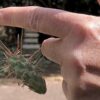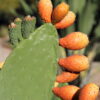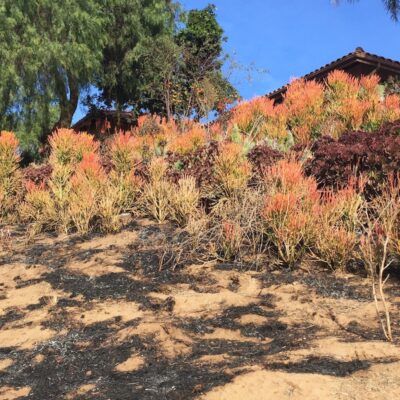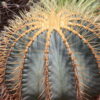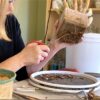Certain succulents are so treacherous, you definitely don't want them near kids, pets, or your ever-thinning skin. But like most plants---have you noticed?---these have both good and bad characteristics. Learn about succulents that are worth the risk and which to avoid.
Initial Considerations
Before planting any spiny, sharp, fanged or otherwise armed succulent, research its size at maturity, how it defends itself, and how it propagates. Does it send forth offsets? Are spines hooked? Needlelike? Nearly invisible? Do its limbs break apart? Is the sap toxic?
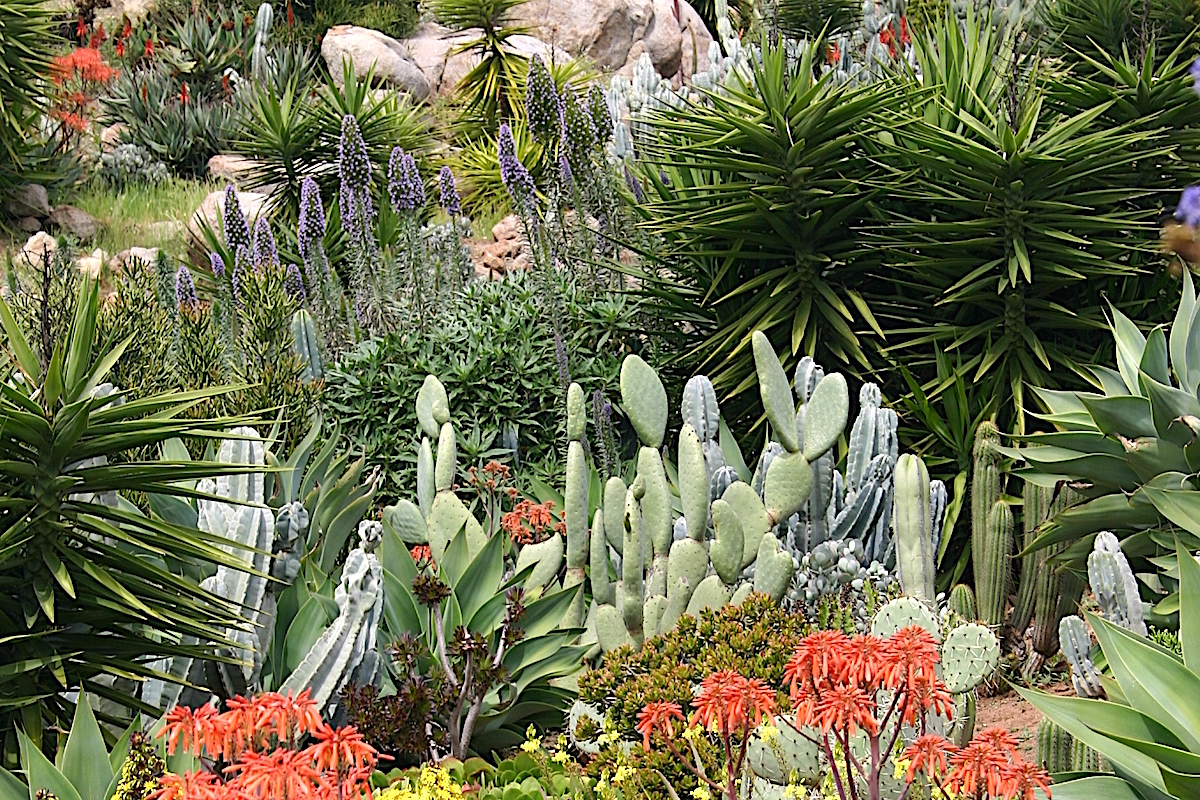
Ceroid cacti, yuccas, opuntia and aloes (in bloom) combine on a Southern CA hillside. Like most plants, spiny or otherwise, each has merits and drawbacks.
Pros and cons
Consider these "pros" to potentially dangerous succulents: Many spiny varieties glow beautifully when backlit, have sculptural and textural appeal, thrive in poor soil, produce gorgeous flowers, have edible pads or fruit, and get by on rainfall alone. They're security fences and firebreaks. Those that form thickets provide a safe haven for birds and other wildlife. Many are free at plant swaps.
And some cons: Gardening around spiky succulents can be downright dangerous. When such succulents get large (many do), they can be devilishly difficult to prune or remove. Think ahead and know what to expect. For example, should you grow spiky agaves below a window to discourage break-ins if the plants make it impossible to clean the glass?
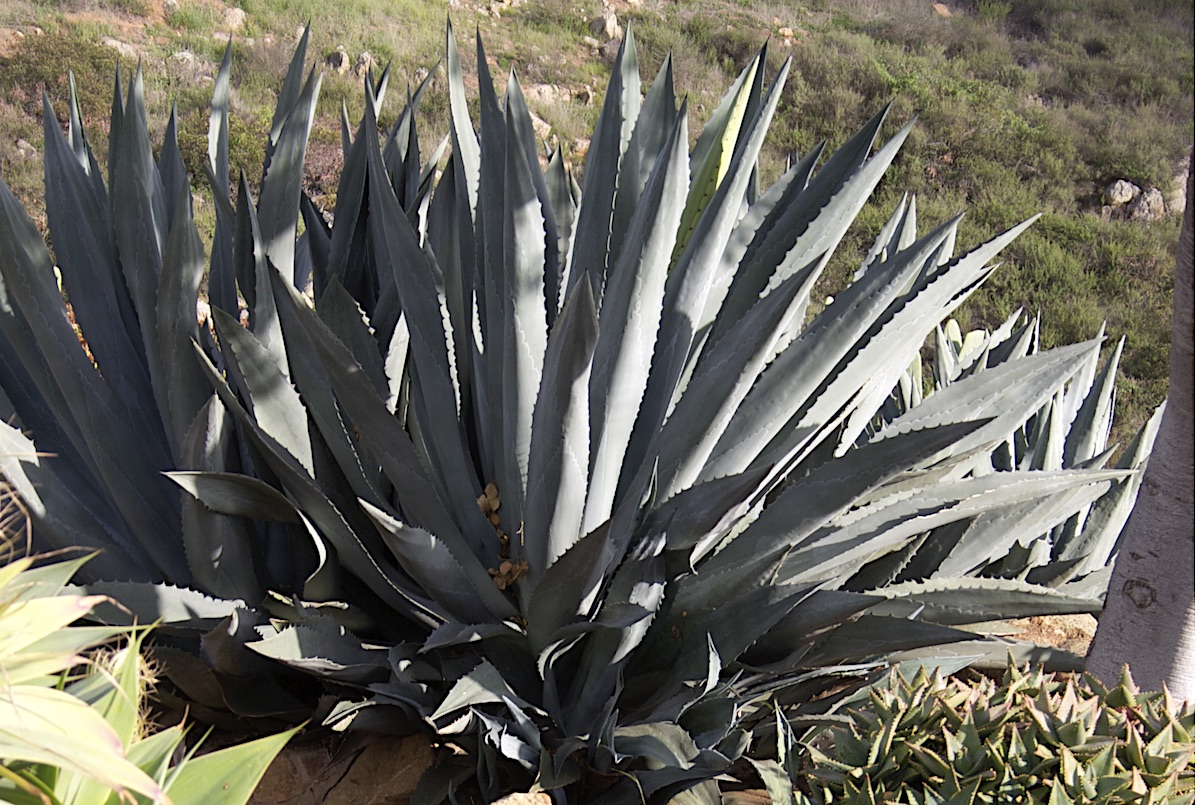
Agave americana (Century plant) gets bigger than most homeowners realize.
Varieties
Be aware (and beware) of these, so you know what you have and whether or not you want them. Except for euphorbias from South Africa, these keep-away succulents are from the Americas.
The succulents I show and describe here are common in Southwest gardens and along the CA coast from the Bay Area south. All do well, when small, in pots---which also is a great way to enjoy them without risk.
Agaves
Not all agaves have stiff, sharply pointed leaves and teeth, but those that do can draw blood.
Century plants (Agave americana) are easy to grow and quite common. As free plants, pups often get added to gardens as ornamental low-water plants. Unfortunately, homeowners often don't realize how huge this species gets over time. Watch my video before you plant Agave americana.
If you want a large agave in your garden, it's smarter to get one that doesn't pup, like Agave ovatifolia.
Stiff-leaved, barbed and needle-tipped small agaves can pierce shoes if stepped on. Among the most vicious is Agave lophantha and its variegate 'Quadricolor'. I won't grow the solid green species, but I wouldn't be without the lovely striped one. Its beauty is worth it. But then, It hasn't stabbed me yet.
Learn more about agaves and see 50 varieties in my Agave Gallery.
See my YouTube video: Agave Essentials and Essential Agaves (14:37)
AGAVE REMOVAL CAUTIONS
Very few species of Agave can be “chopped up” without potential injury to the person doing the chopping (or chainsawing), says Duke Benadom, succulent book author, expert and long-time member of the Los Angeles Cactus & Succulent Society: "When most members of the genus flower, all of the chemicals (juices produced by the flowering [dying] process) become concentrated in the core and in the bases of the leaves. Cutting into this tissue releases both liquid and gaseous chemicals that are quite dangerous to humans."
Duke himself "got extremely nauseated and came close to passing out." He recommends "either waiting until the plant has dried up or digging it out by the roots while in one piece. They are also much safer to chop up prior to the beginning of the flowering process."

"I have agaves all over my yard. While trimming them, my skin was exposed to some of the juice. I immediately experienced an intense burning sensation and ran in to shower. The next day, I had red welts all over my arms and legs and virtually any surface of my body that came into contact with the plant sap." -- Greg M. via email
Cacti: Barrel and columnar
Spines can pierce skin and be hard to remove. Even so, those spines you can see are better than those you can't (read about glochids, below). Avoid planting any cactus where passersby may brush against it. It's an obvious threat at eye-level, but at ankle-level too.
Golden barrel cactus, a popular landscape succulent, is not as treacherous as it looks because its spines curve downward. It's one I grow because IMHO its ornamental value outweighs the risk.
Many other cacti start out spherical and over time become cylindrical; some (collectively known as ceroids) turn into tall, spiny columns. Before planting, know how large any cactus may become.
Learn more and see 80+ varieties in my Cactus Gallery.

Barrel cactus, small agaves and Euphorbia 'Sticks on Fire' make a colorful, textural combo. It's lovely, but do the risks outweigh the beauty? It depends.
Cacti: Cholla (Cylindropuntia species)
Often seen gracing desert gardens, cholla's needlelike, translucent spines glow beautifully when backlit. Cylindrical pads grow new ones, thereby enlarging plants indefinitely. The danger is that pads detach easily and cling to whatever they touch. Cholla does this to propagate itself. Detached pads root readily wherever they fall.
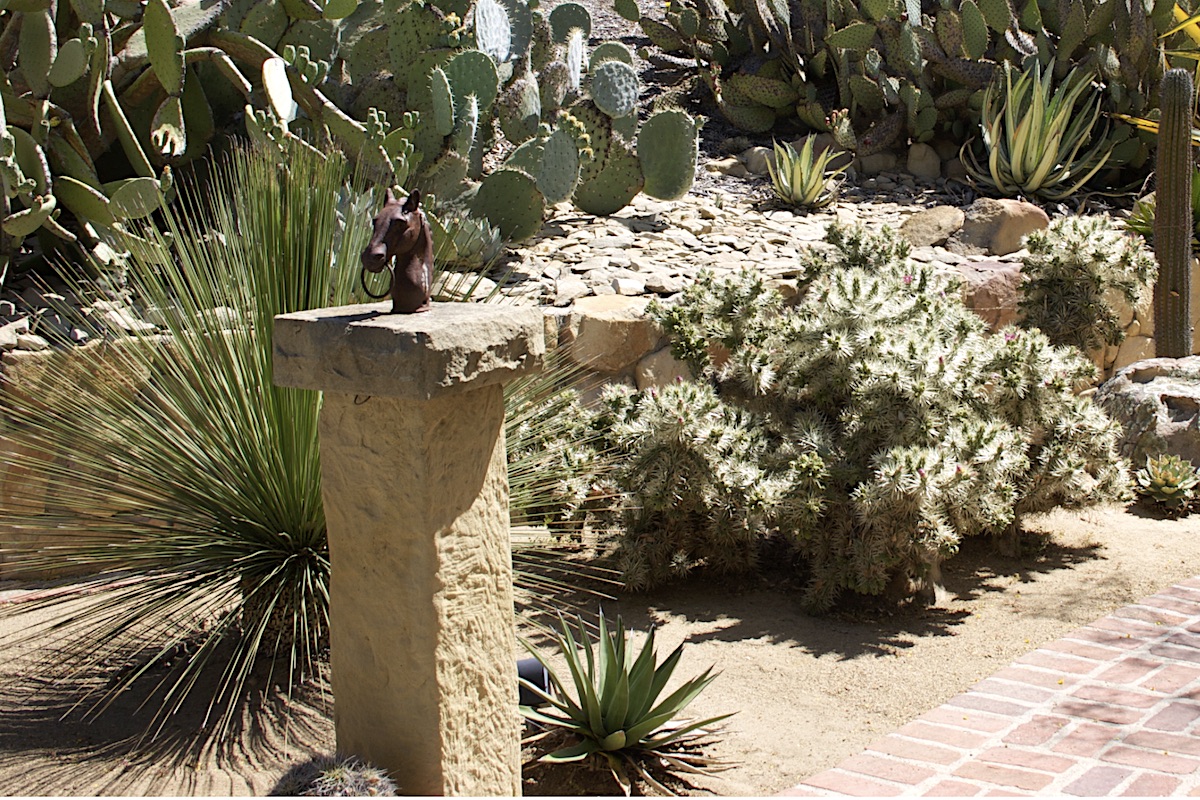
Opuntia, cholla and agaves in a Santa Barbara garden
A cautionary tale: Eve's needle (Austrocylindropuntia subulata, below) is an evil cholla I'll not have in my garden. Not far from my house, it grows along a chain link fence patrolled by barking dogs. Bad idea. Not only is this cactus a threat to passersby, it'll soon endanger dogs (and kids and other animals) inside or outside the fence. This video shows its propensity to break apart.
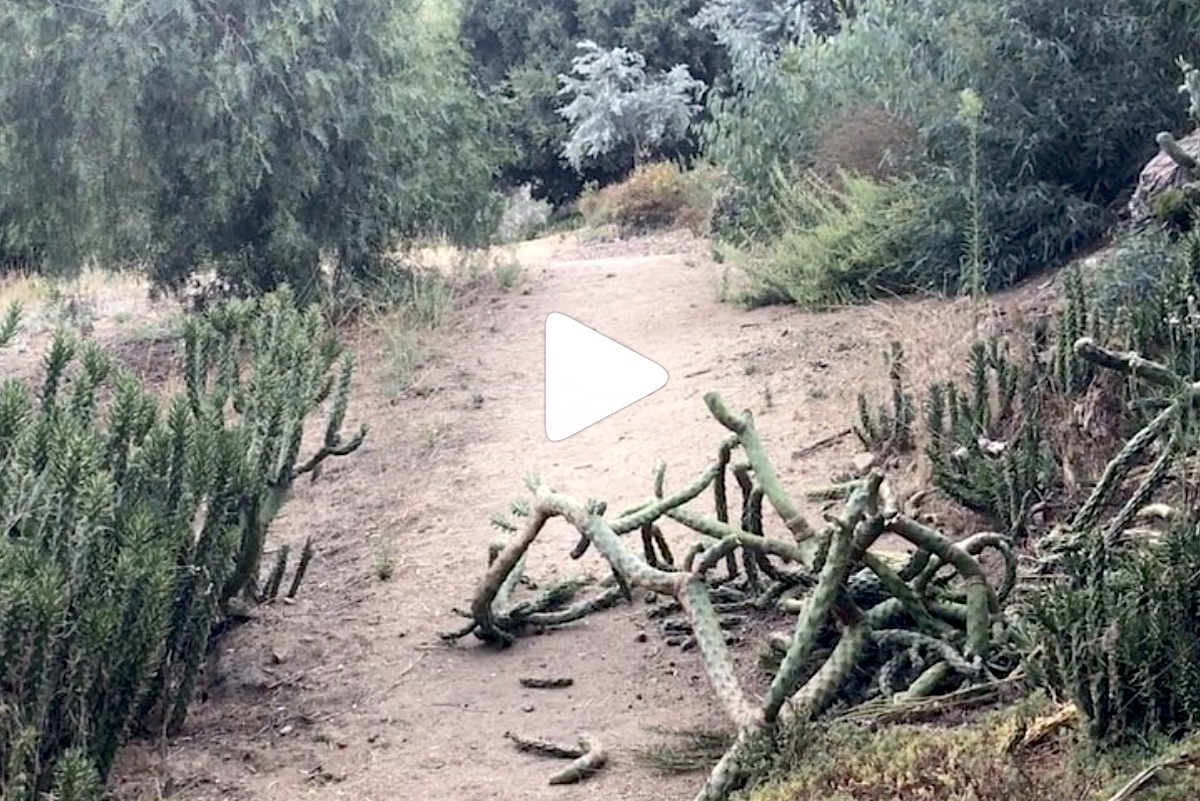
Watch a 1-min. Eve's needle video on my Instagram feed.
Are there merits to growing cholla? Certainly. Learn more.
Cacti: Opuntia species
Opuntia sp. (paddle cactus) has hundreds of species and cultivars, including diminutive varieties only a few inches tall; those that attain 7 feet or more; and ornamental ones with pale blue, variegated or purple pads.
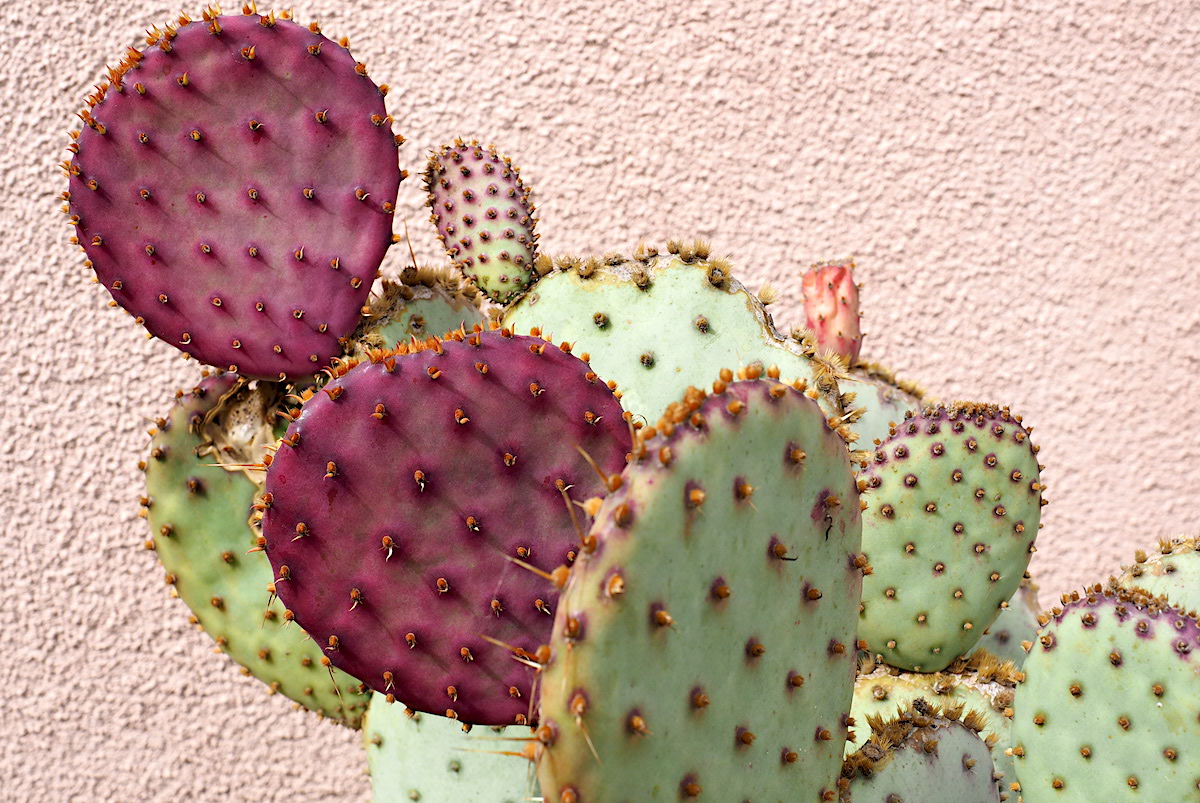
Opuntia Santa-Rita
The length, shape and sharpness of opuntia spines vary by species.
A defining characteristic of the genus are secondary, smaller spines known as glochids. Such tiny, translucent fishhooks are miserably difficult to remove from skin. When you see a polka-dotted opuntia, watch out: those dots are glochids.
On the plus side, paddle cacti are useful as an impenetrable green hedge that looks good year-round (if kept free of a fuzzy white pest known as cochineal scale). Use smooth, minimally-spined varieties as a nonthreatening visual deterrent to trespassers; one is Opuntia cacanapa 'Ellisiana'.
Learn more about paddle cactus on my Opuntia page.
Euphorbias
Euphorbia is an immense genus that includes ornamental shrub and tree succulents. Some, like Euphorbia ammak, are thorny and get quite large over time.
Milky sap that oozes from the cut stems or trunks of euphorbias can cause a skin rash and eye irritation so severe it sends the victim to the hospital. Wear gloves and eye protection when pruning euphorbias, and don't plant where children or dogs play.

Euphorbia tirucalli, species (solid green) and 'Sticks on Fire' (foreground).
On the plus side: Find out how Euphorbia tirucalli 'Sticks on Fire' helped protect a home from wildfire. Discover its ornamental value in gardens.
Yuccas
Some yuccas have leaves that appear stiff yet are actually soft and flexible; others have foliage like bayonets.
The explosive silhouettes of Yucca aloifolia are a visual enhancement to many Southwest gardens including my own. I wouldn't be without this soft-leaved succulent that starts readily from stem cuttings.
I'd also have blue-leaved Yucca rostrata if it weren't so hard to come by. It's extremely slow growing and nurseries can't keep it in stock. However, you couldn't give me most other Yucca species---too sharp, too tall.
Avoid planting yuccas near irrigation pipes or building foundations; their water-storing, bulbous bases swell over time.
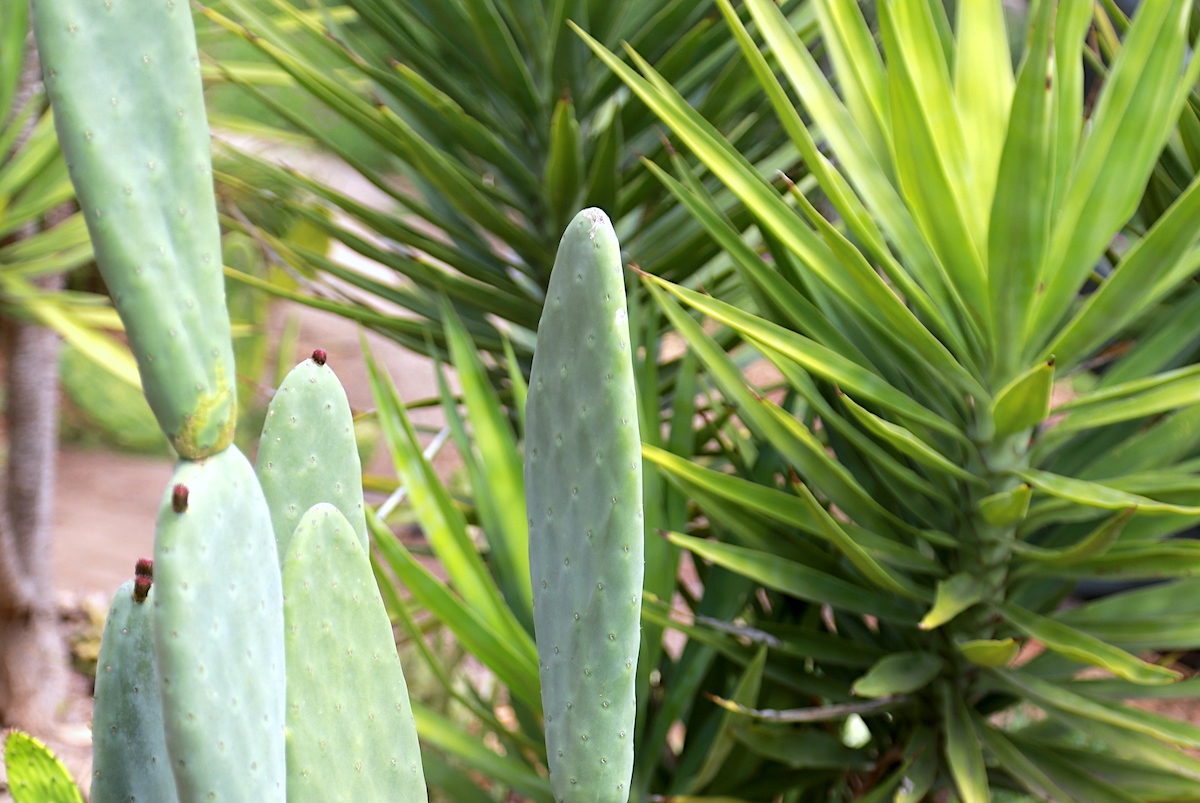
Opuntia cacanapa 'Ellisiana' and Yucca aloifolia in my garden.
See yuccas used beautifully in a no-water Santa Barbara garden.
If you know of other succulents worthy of inclusion, do let me know. Thanks! -- DLB

